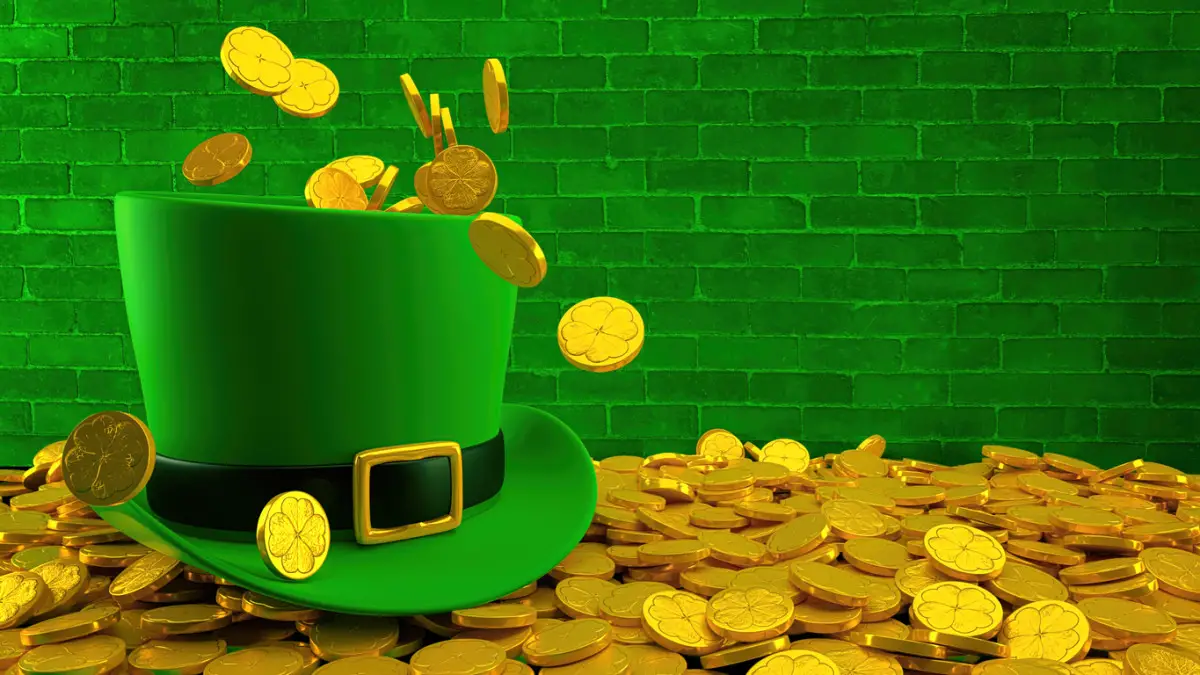Celtic folklore has a number of stories about fairies, who often carried people off, never to be seen again. And one type of fairy from this folklore includes the leprechaun. But are leprechauns real?
When you hear a person of Irish descent use the phrase, “Away with the fairies,” they’re indicating one might not be living in the real world, and might not see things as they really are.
So, what does that mean for leprechauns, which are prevalent in our St. Patrick’s Day festivities each year on March 17? What’s the story behind the little, bearded male creatures (there’s no historical evidence that there has ever been a female leprechaun!) wearing green suits and hats and wreaking havoc of the fun kind (at least in today’s day and age)? We’ve dug into the European archives, and come up with some answers on these legendary trickster fairies.
Related: Learn All About Saint Patrick’s Day
What Is a Leprechaun?
Leprechauns, so named perhaps after the Irish Gaelic word, “luchorpán,” (“small body”), are actually part of the fairy family in Irish folklore.
Their name is also associated with another old Irish term, ‘’leath bhrogan,” meaning “shoemaker.” This profession is what earns them their iconic pots of gold, as they hide their earnings in a pot—yes, you guessed it—at the end of a rainbow.
Related: Are Banks Open on Good Friday? Find Out if You Can Stop In Before the Easter Holiday
What Is the Story Behind the Leprechaun?
The earliest mention of a leprechaun appears in the medieval tale known as the Echtra Fergus mac Léti (Adventure of Fergus, son of Léti). From there, the stories seem almost endless. If you catch a leprechaun, ask them to grant you three wishes. They might be seen dancing an Irish jig, or playing an Irish harp, fiddle or tin whistle. They’re legendary water-dwellers, and always tiny—small enough to sit on one’s shoulder.
Speaking of stories, you can participate in one yourself. Visit a park in Carlingford Lough, County Louth, Ireland, on a Thursday, Saturday or Sunday, and go on a leprechaun hunt. There are rumored to be 236 leprechauns still living in Ireland.
When in Dublin, visitors can check out a leprechaun museum, which provides tours and detailed information on leprechauns and Irish folklore throughout the ages.
Related: 100 St. Patrick’s Day Quotes to Channel the Luck of the Irish This March
What Do Leprechauns Look Like?
The earliest stories of leprechauns have them wearing red and always a hat—often a three-cornered one. Today, they are typically depicted wearing a green suit, green hat, red beards and shoes with buckles—sometimes smoking a pipe.
Related: Is It ‘St. Patty’s Day’ or ‘St. Paddy’s Day’? Here’s the True Irish Way To Shorten St. Patrick’s Day
Are Leprechauns Evil?
It depends on which story you’re reading. Early leprechauns were described as particularly monstrous, as well as house haunters and drunkards. Other tales have them deceiving humans—acting as moral lesson-givers against greed. Still, others have them granting captors three wishes, but then leading them astray.
Today, it varies. After all, you can even find leprechauns on cereal boxes, such as General Mills’ “Lucky Charms,” which seems harmless enough.
Related: 35 St. Patrick’s Day Nail Ideas To Get You in the Irish Spirit
How Did Leprechauns Become Mascots for St. Patrick’s Day?
Interestingly enough, leprechauns have their own holiday in Ireland, on May 13. Leprechauns are characters in folklore, with no direct origin to St. Patrick’s Day. But both are Irish. That’s enough to include them in many St. Patrick’s Day celebrations—alongside wearing green, having a parade, decorating with shamrocks, and drinking beer (namely Harp or Guinness).
Related: St. Patricks Day Trivia
Are Leprechauns Real?
We’ll let you decide.
Irishtraditions.org tells us, “Under European Union legislation, leprechauns are considered to be a protected species.”
It has been said the luck of the Irish, and leprechauns, go hand in hand. As the website, Irisharoundtheworld, states, “According to legend, the only way to successfully catch Leprechauns is to believe 100% that they are real.” So, catch one, take a look, and then decide if they’re real. Good luck!
Up Next: You’ll Be ‘Dublin’ Over in Laughter Once You Read These 100 Hilarious St. Patty’s Day Jokes
Disclosure: This article may contain affiliate links, meaning we could earn a commission if you make a purchase through these links.






